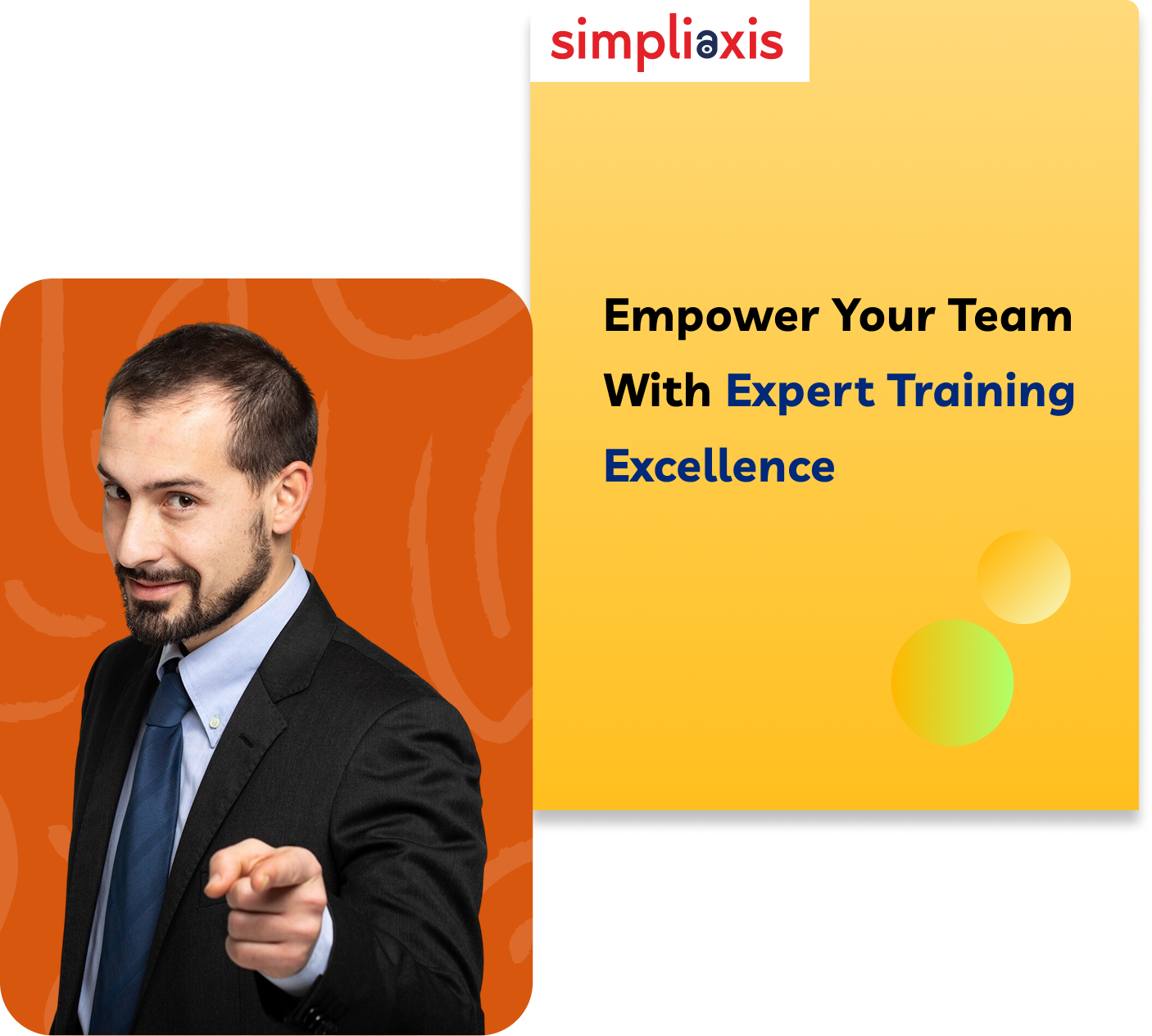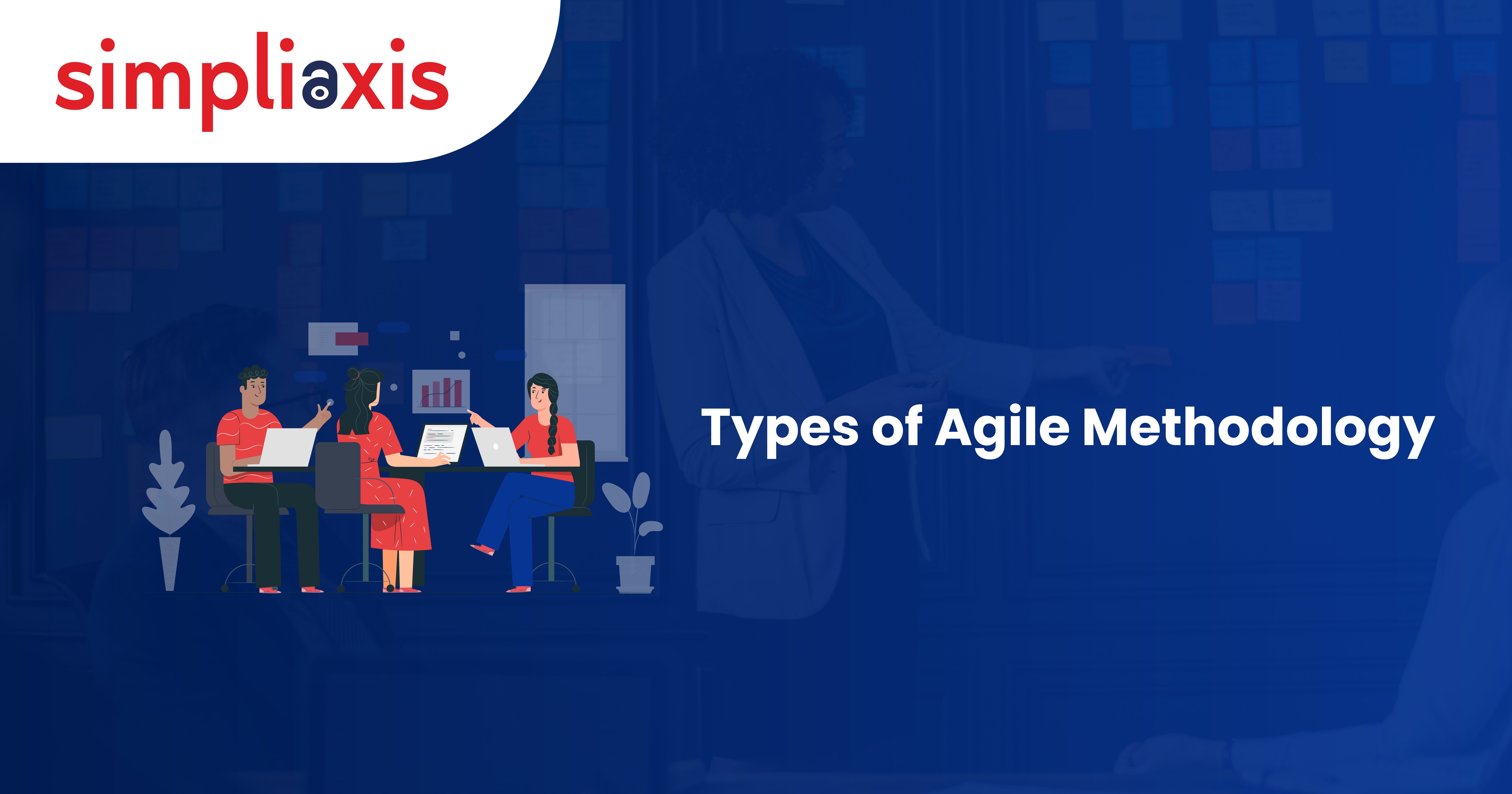Knowing what agile is is important before comprehending the definition of agile approaches. Agile software development approaches were developed based on the most respected Agile manifesto outlining fundamental ideas and practices.
Agile represents a group's methods of managing a plan or project by breaking it into phases while maintaining constant communication with clients. Throughout the whole software development project, there is continuous monitoring. One of the benefits of the agile methodology is that, in contrast to the traditional waterfall methodology, both the development and testing phases occur in parallel and in timing.
Types Of Agile Methodology- Explore The World of Agile
There are currently several agile approaches in use. We'll go into the details of these kinds of agile methods with their advantages and disadvantages.
Kanban
The term "Kanban" has its roots in Japanese and means "visual board or signboard." It is associated with the idea of "just in time." The Kanban idea was first presented as a lean manufacturing method, and it made its way into agile software development teams gradually. This approach develops and manages projects using visual methods.
The Kanban Board, which shows the software development process flow through separated columns, oversees projects using the Kanban methodology. Teams can monitor their progress through each stage of development and prepare for the following tasks to deliver the product "just in time," which helps increase team visibility.
Advantages
- The ability to use the straightforward idea of "Cards" to display all the jobs under a particular project (by Completed, In Progress, or Testing).
- You can restrict the quantity of jobs that are currently in progress (i.e., the amount of work that is completed while considering its deliverability or resolution).
- focuses on the length of a cycle, or the time it takes for a work to go from the backlog to the finished stage.
Disadvantages
- Team members may misunderstand the information displayed on the Kanban Board, particularly if it appears to be out of date;
- Since Kanban lacks timeframes, time-related issues, such as delays, may arise at any point.
Also, Check:The Most Popular Kanban Tools
Scrum
The Scrum development process is one of the most well-known examples of agile methodology, and it is represented by many development cycles. The development phases of Scrum are divided into cycles or stages known as "sprints," just like Kanban. A single sprint is managed at a time since the development time allotted for each sprint is optimized.
The continual deliverables core of scrum and agile techniques allow designers to rearrange priorities so that unfinished or past-due sprints receive additional attention.
To determine the optimal way to carry out the sprint, the Scrum Team coordinates daily interactions during the daily scrum when memorable project roles like those of a scrum master and a product owner are assigned.
Advantages
- The desire of programmers to complete each sprint by the deadline contributes to positive team motivation, which they get through this method.
- Good sprint planning is prioritized so the entire scrum team understands the "why, what, and how" of assigned work.
- The dynamics of this method allow developers to rearrange priorities, ensuring that sprints that still need to be completed get greater attention.
Disadvantages
- The team may occasionally lose sight of the project as a whole and concentrate on a single component due to the project's fragmentation and the hunt for development agility.
- There could be some misunderstanding among team members if each developer's role is not specified.
Crystal
Crystal is a collection of more manageable agile development approaches, including Crystal Yellow, Crystal Clear, Crystal Red, and Crystal Orange. Crystal was one of the key figures in creating the Agile Manifesto for software development. Each of them has a unique and distinct framework defined by variables like project priorities, team size, and system criticality. The type of crystal agile technique selected depends on the project's requirements or system criticality, such as Comfort (C), Essential Money (E), Discretionary Money (D), and Life (L).
Like other Agile approaches, Crystal also focuses on customer happiness, regularity, minimal administration with strong user interaction, and timely software delivery. The Crystal family has earned a reputation for using the lightest forms of agile methodology by promoting the idea that every system or project is unique and requires combining many techniques, processes, and regulations to achieve the most outstanding results.
Advantages
- There is always room for improvement, which frees up time from software development to talk about how to make procedures better.
- encourages interaction and information sharing among team members and makes it easier for teams to communicate.
- Crystal needs to be delivered frequently to detect potential issues at every turn.
Disadvantages
- The principles may change depending on the size of the team and the project due to the variations in the methodology family, which could lead to less straightforward projects;
- Due to the ongoing need for reflection and communication, it might not be the greatest option for geographically dispersed teams;
DSDM-Dynamic Systems Development Method
The Dynamic Systems Development Method (DSDM) was created in response to the demand for an industry-standard charter to ensure software was delivered quickly. To plan, carry out, oversee, and expand the software development process, DSDM provides an extensive framework that can be established and adjusted. The DSDM is based on eight principles and a business-driven methodology. Its core beliefs are that project modifications are always expected, and the timely delivery of quality work must never be compromised.
Also, Check:DSDM Vs Scrum
Advantages
- A variety of cross-functional teams and departments can benefit from improved communication thanks to DSDM.
- Product teams may provide deliverables more quickly thanks to DSDM, which also helps them stick to a fair timeframe and reduce delays.
- The strategy encourages teams to maintain regular contact with interested parties to get suggestions and feedback.
Disadvantages
- Implementing DSDM can be expensive. It may help a company save money by promoting teamwork and shortening the time it takes for items to reach market, even though it does involve initial investment.
- Professionals may be able to go back and add more original, creative features to their work in the future by focusing on iterative development.
- Teams need a solid framework, management's complete support, and competent project managers to guide the project life cycle for DSDM to function at its best.
FDD-Feature-Driven Development
This customer-focused, incremental, iterative agile methodology incorporates several industry-recognized best practices. To continuously deliver functional software promptly is its primary objective.
Building an overall project model, making feature lists, planning and designing according to features, and producing according to parts are some of the steps of the life cycle. Big project teams can advance their goods steadily by following this five-step method.
Advantages
- FDD helps to guarantee that the development team remains focused on a clearly defined scope of work, which can assist in lowering the risk of scope creep and keep the project on track. This is achieved by emphasizing the delivery of tiny, incremental features.
- FDD strongly emphasizes providing customers with functional software as soon as possible.
- Since FDD is an agile technique, it is meant to be adaptable and sensitive to shifting priorities and requirements.
Disadvantages
- Feature Development (FDD) has a set of discrete, clearly defined stages that must be completed to create a feature, making it potentially more involved than other agile techniques.
- A large time and resource commitment is necessary, For FDD to be successful.
- FDD needs a few incremental features to be delivered for the advancement.
Lean Method
Producing only what the product genuinely needs is the primary goal of lean product development. It minimizes pointless actions while optimizing time and resources. The group works with Minimum Viable Products (MVPs) made available to clients as soon as feasible. After that, user input is gathered and incorporated into upcoming software releases. Team members are free to make their own decisions, which boosts morale, and the team gets rid of pointless tasks to save time (such as changing the code or using resources inefficiently).
Advantages
- The goal of lean management is to maximize profitability, which entails both revenue growth and expense reduction within an organization.
- Beginning with the customer's perspective, lean management focuses on how customers interact with employees, respond to their problems, and use the product. These are some of the main factors that motivate the elimination of inefficient procedures.
- Lean also has to do with supporting value and quality awareness. Processes will be optimized to minimize errors to achieve the ultimate goal of reducing the amount of defects and rework in goods.
Disadvantages
- Significant prices for businesses that aren't ready for the extra money associated with purchasing new equipment.
- Because of the whole facility overhaul, it is challenging to transition from the previous method.
- Low quantities of stock are typically maintained on hand to reduce any carrying expenses because inventory is deemed wasteful in lean operations.
SAFe
SAFe for Lean Enterprises is considered the best business agility framework globally. To help businesses succeed in the digital age by delivering cutting-edge products and services more swiftly, reliably, and with excellent quality, SAFe integrates the best elements of Lean, Agile, and DevOps into a comprehensive operating system.
Thanks to its scalability and flexibility, every company may tailor SAFe to match its specific business needs. With four pre-configured configurations, SAFe offers many solutions, from simple systems that only need a few teams to complex systems that require hundreds or even thousands of people to develop and deliver.
Advantages
- SAFe offers a systematic framework that guarantees Agile concepts can be extended across teams, departments, and even entire organizations, in contrast to traditional Agile techniques that may find it difficult to maintain their efficacy at scale.
- To create a cohesive feeling of purpose throughout the entire business, SAFe also places a strong emphasis on teams being aligned with the strategic objectives of the enterprise.
- Every stage of the development process is guaranteed to incorporate quality practices thanks to the framework.
Disadvantages
- It can be difficult to implement SAFe in a large organization. This intricacy may cause team members to become confused and resistant, particularly if the change is poorly handled.
- Sometimes bureaucratic procedures and administrative overhead are introduced by the structured nature of SAFe.
- Team members used to older methodologies or established Agile practices frequently object when SAFe is introduced.
XP-Extreme Programming
Designed by Kent Beck, this standard Agile development framework can be customized to fit the needs of development organizations of different sizes. The core tenet of the Extreme Programming ("XP") technique is finding "the simplest thing that will work" without overemphasizing the long-term product vision.
It is an approach that puts the client's needs first and emphasizes virtues like courage, respect, simplicity, communication, and feedback. This practice fosters trust by encouraging developers to embrace changes in customer needs, even if they arise in the later phases of the development cycle.
Advantages
- The written code's simplicity is advantageous because it makes improvements possible at any moment.
- Developers may set goals and see reasonably fast results because the entire process and the XP development cycle are visible.
- Because software is always being tested, software development is more agile when employing other approaches.
Disadvantages
- Extreme concentration on programming may cause the design to be given less priority, necessitating further attention afterward.
- If not every team member is located in the same region, this framework might not function as well.
- It's not always practical to keep an error register up to date in XP projects, and this neglect of oversight may result in similar bugs down the road.
Which Best Practices Apply To Agile Development?
Regardless of your approach, remember that being more agile necessitates changing your perspective on your task. Everyone on the team will benefit from clearly stating the end objective, which is the rationale behind the agile transition and the added value it will provide to customers beyond the specific products you ship. It facilitates bringing the team together around a particular method of operation.
The following agile best practices for Agile Methodologies can be planned to be implemented, regardless of the methodology you select:
- Iterative cycles: Planning, designing, developing, testing, and deploying are all part of an iterative cycle that teams adhere to. Taking input into account and producing a better product is possible with every iteration.
- Incremental development: Developers use gradual development by dividing big projects into smaller, easier-to-manage work units. Your product is continuously developed since every batch of work builds upon earlier iterations. A single-release after-effect differs from updates, which occur early in the process.
- Frequent Communication: Communication is critical to alignment and must be maintained throughout the product development team. Regular communication with colleagues from other departments reduces expensive rework. Agile teams communicate about availability, the state of the work, and any problems that require attention.
- Time-boxing: Before going on to the next project or stage of work, developers concentrate on doing one task at a time.
- Retrospectives: Team members check in with each other regularly to discuss ways to improve procedures moving ahead, usually after a sprint or other time-boxed period. Agile retrospectives enable candid, open conversation that allows groups to change and grow over time.
What Are The Benefits Of Using Agile Methodology?
Agile is a way of thinking that helps create development processes that are lighter, faster, and more effective. The procedure provides the goods and services that consumers want, and it speeds up the entire process of developing new items in response to modifications;
- Faster: Developing and responding more quickly is one of the main advantages of the Agile methodology. A quicker software development process results in a lucrative firm by cutting down on the amount of time it takes to pay someone and receive payment.
- Boost customer satisfaction: Agile development eliminates the need for a lengthier wait time to fulfill consumers' specific requests. A rapid series of iterations are carried out near what they seek, promptly. The system can quickly adapt and reconfigure effective consumer solutions in response to changes in the overall environment of product development.
- Executives value: Rather than blindly adhering to a set of norms, employees are highly praised when they offer innovative suggestions. Workers can define and accomplish their goals with the help of agile approaches. Employees can fulfill the given goals and objectives and respond to difficulties and impediments to the best of their abilities with these techniques.
- Remove rework: By including more clients at every stage of the requirements and delivery process, the project may be kept on course and in compliance with client needs at all times, resulting in fewer detours and time savings during the development cycle and customer-suggested adjustments.
When To Invest In Tools For Agile Workflow?
An agile framework may always be fitted with an existing workflow tool. Nevertheless, spreadsheet tools, bare task management boards, and bug-tracking software are limited in what they can accomplish. Your procedures will become more complex, so you'll likely require an agile workflow platform that lets you work closely with product management, has reporting features, and offers templates.
Mastering Agile Diversity: Unveiling Strategies with CAL I Certification
Explore the rich and varied types of Agile approaches. Agile executives must grasp these strategies. With its Certified Agile Leadership (CAL I) Certification, Simpliaxis provides insightful information and training. Determine which agile certification best suits your needs by looking through the options. CAL I will help you advance your leadership abilities for a thorough and significant agile migration.
The Bottom Line
The Agile Development technique is a redesigned approach prioritizing speed and agility when developing software. Today, most digital items are produced using the Agile development technique. Important metrics produced by agile, like lead time, cycle time, and throughput, help identify bottlenecks, evaluate team performance, and make data-driven decisions to fix them. An agile framework is an effective tool that helps clients, team members, and managers.
By going through all the Agile methodologies, you can envision which Agile method best suits your business and job requirements, contact your job done, and enroll in an Agile certification for perfect guidance and learning in the Agile framework.
















